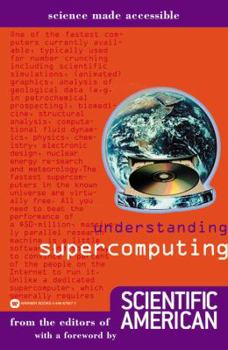Understanding Supercomputing
Select Format
Select Condition 
Book Overview
In this book you'll discover what constitutes a 'supercomputer', how the supercomputers of today function, how you can make your own computer into a super machine - through networking - and what tomorrow holds in store for computer usage in terms of hardware, software and everyday applications.
Format:Paperback
Language:English
ISBN:0446679577
ISBN13:9780446679572
Release Date:December 2002
Publisher:Grand Central Publishing
Length:176 Pages
Weight:0.33 lbs.
Dimensions:0.5" x 5.3" x 8.0"
Customer Reviews
1 rating
Improvements and what to use them for
Published by Thriftbooks.com User , 21 years ago
A recent grouping of 15 articles published in Scientific American, from 1995-2001. Though computing is still chugging along at Moore's Law's rate, these articles are still quite germane. Written at a level for a broad, educated audience, they give you a good understanding of the various key points in supercomputing.Issues include how to cluster computers into a functional unit, that can run these all efficiently (load balance). Or, how to make novel arrangements of computers into a supercomputer. Plus, of course, the steady progress of vector supercomputers, which has been the traditional route since Cray pioneered these in the 1970s.The articles are not just about how to make better supercomputers. They also discuss why you'd want to do so. The problems you can now tackle with better hardware. Meteorology being the classic (unclassified) application.






